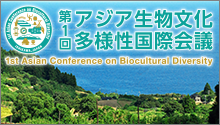The Second Meeting of the Noto GIAHS Biodiversity Working Group for FY2024 took place on the afternoon of Thursday, December 12, 2024, at Nanao City Hall.
Experts, local government officials, and representatives from related organizations attended the meeting, where they engaged in vibrant discussions about biodiversity monitoring activities and future strategies for the Noto region. A total of 27 participants were present, including those attending online.
To begin, the members shared updates on the current fiscal year’s status.
Despite the challenges posed by earthquakes and heavy rainfall, a total of 18 observation meetings were successfully conducted at 4 schools in Nanao City, 1 group in Shika Town, and 9 schools in Suzu City. Additionally, expert members reported on various research activities, including surveys of ibis feeding grounds, biological assessments in elevated areas, investigations of seafloor topography, and seaweed bed studies.
Participants highlighted the importance of identifying safe venues for observation meetings and securing lecturers, as some meetings had to be postponed due to safety concerns and scheduling conflicts. Observers also discussed potential collaborative opportunities for the future.
The group noted that new educational materials and posters focusing on the organisms of satoyama and satoumi have been developed. These resources will be utilized in biodiversity monitoring activities involving local elementary students and the community, with posters available for distribution to interested schools. Preparations are underway to conduct future surveys that consider the impacts of heavy rainfall.
Next year marks the final year of the GIAHS Conservation Plan, which undergoes revision every five years. The Working Group discussed key initiatives needed to prepare for the upcoming review by the expert committee and the subsequent conservation plan amendment. It was agreed that ongoing discussions regarding biodiversity monitoring mechanisms and frameworks remain essential.
At the conclusion of the meeting, the initiative “Shiokaze Natural Environment Log,” established by the Ministry of the Environment in response to the Tohoku earthquake, was presented. The Working Group expressed intentions to collaborate with the Ministry of the Environment, academic institutions, and external researchers to assess the impacts of recent earthquakes and heavy rains in Noto region, while also exploring cooperative efforts for regional restoration.
The next WG meeting is scheduled for March 2025.




